
Galleries
Team Gallery’s Jose Freire on Why He Is Quitting Art Fairs for Good
The veteran art dealer explains why he has soured on the art market's central apparatus.
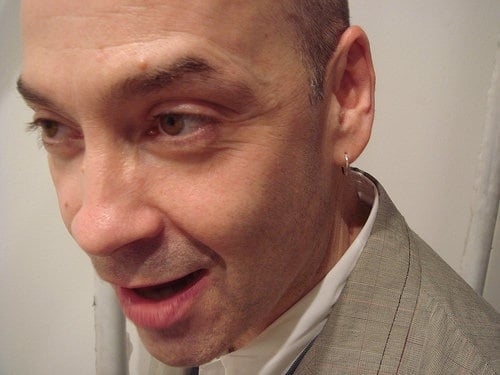
The central driver of the modern-day art market, at least when it comes to galleries, is art fairs. They promise efficiency: for a hefty booth fee (plus travel and shipping costs), dealers from around the world can convene in a lucrative faraway region for a chance to sell lots of work over a short span of days to a churning swirl of eager collectors, the sales equivalent of fish in a barrel.
In recent years, these frenetic events have grown ever more important, offering increasingly busy art professionals and their clients a chance to socialize, exchange ideas, and hoover up information about new directions in art with such streamlined speed that it has begun to displace other traditional avenues, like going to the brick-and-mortar galleries themselves.
Some dealers, especially the biggest ones, find this to be an immensely rewarding system. Others, especially smaller operations like Team Gallery, have begun to find them a losing bet. That’s why, after a final appearance at Art Basel Hong Kong later this month, Team founder Jose Freire says he will never do another art fair again.
Having participated in a staggering 78 fairs over the past 17 years of the gallery’s existence, Freire—who has two outposts in SoHo and one in Venice Beach, California—has had plentiful experience with the business of hawking artworks from a booth, and his reasons for quitting now are varied. They might, however, resonate with his fellow mid-career dealers. To find out what caused his change of heart, artnet News’s Andrew Goldstein sat down with Freire in his Grand Street office to discuss his decision. Read the first installment of their two-part interview below.
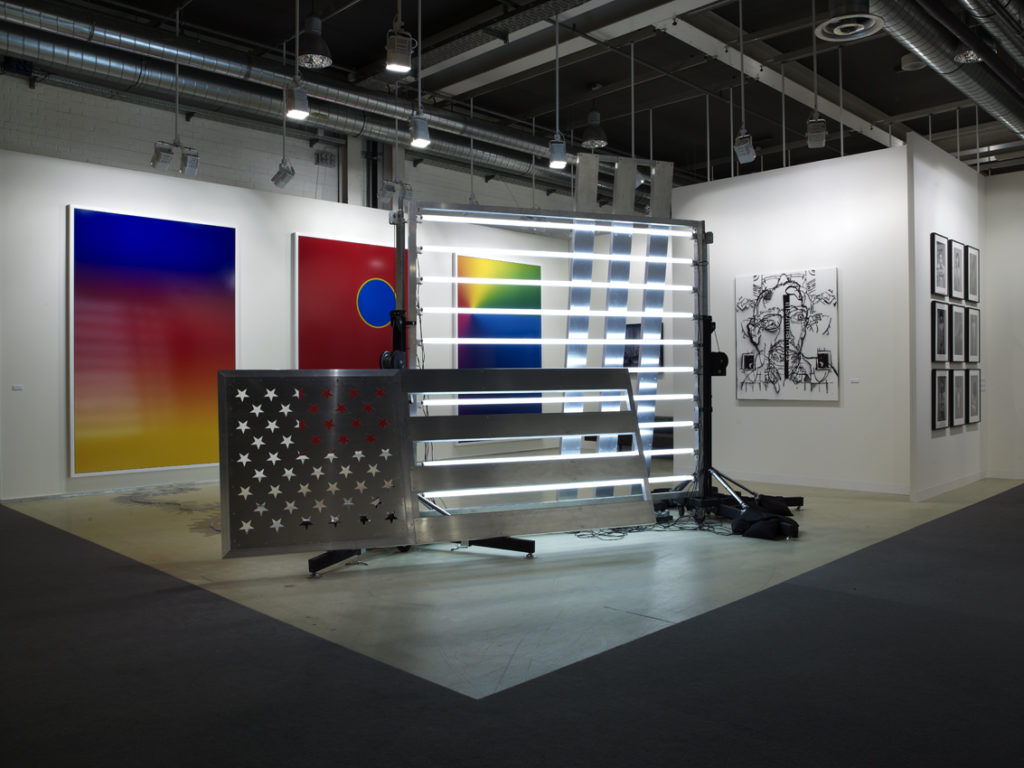
Team Gallery’s booth at Art Basel in 2010, with work by (left to right) Cory Arcangel, Banks Violette, and David Ratcliff. Photo courtesy of Team Gallery.
A little while ago, at Art Basel Miami Beach, you told me that you had decided to cease doing art fairs, saying that for various business reasons you felt that “to stop doing art fairs at this point makes sense—to continue them would actually be irrational.” If you go to the fairs page on your website, it shows that you’ve done 78 art fairs over the past 17 years. Obviously you have put a lot of time and energy into thinking through the art-fair model, which for some people might seem like a dumb topic. But it is increasingly central to the entire art-market apparatus.
I’m not entirely sure that it’s a dull topic. If I find myself at a dinner sitting next to an art-world person and we spend an hour on shoptalk—because that’s what happens—it’s very rare that art fairs aren’t a part of the conversation. Everyone is talking about it, and I don’t understand why the conversations are so private.
What kinds of things do people talk about when they talk about art fairs?
All the conversations I’ve had are about how much people dislike them. I haven’t had a conversation with anyone in memory that was about how terrific they thought art fairs were. Generally, you do an art fair, and people ask you how the art fair went, and you say, “Terrific.” And then the art fair issues their proclamation of how the fair went: “Terrific.” Everything is “terrific.” So I thought the best thing to do would be to go up to colleagues and just let them know that while I’m sure it’s “terrific” for them, it’s not for me. If you open up and are very honest with people, all of a sudden the realization is that they’re on the same page.
You’ve done so many fairs over the years, though—they must have been useful to you. How did you start doing them in the first place?
We started doing fairs in 2001, when the gallery was five years old, because we got into the “Statements” section at Art Basel. We did “Statements” three times, and we also did Liste four times, before we started doing the main “Galleries” section of Basel, which I always thought was the grownup section of the fair. Over the years, we’ve done as many as eight fairs in a year, and as few as two or three. It started to peak when we did both editions of Frieze on top of everything else. We did Frieze in London eight times consecutively and we did Frieze in New York three times consecutively before we decided to pull out completely in 2014. Those fairs accounted for this gallery’s biggest financial losses. The Frieze that happened in 2008 after the Lehman Brothers crash was the biggest financial loss that this gallery sustained.
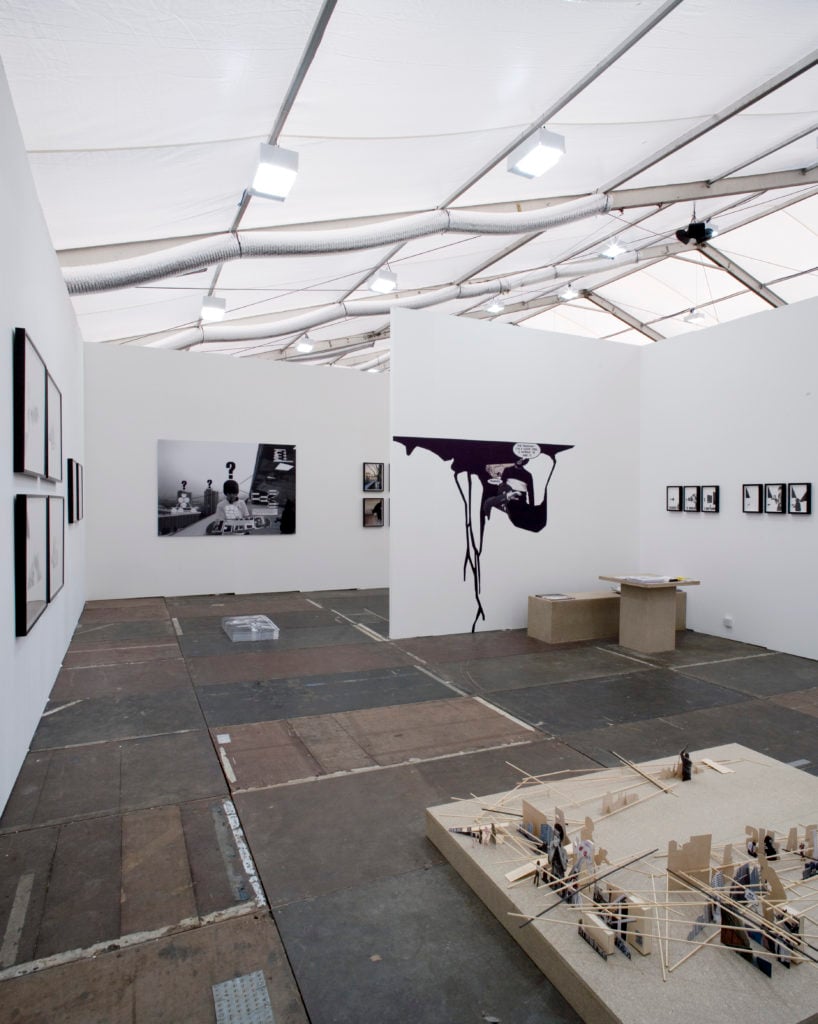
Jakob Kolding’s solo booth at the Frieze Art Fair in London in 2008. Photo courtesy of Team Gallery.
What made it such a big loss?
The booth costs, the exchange rate, the fabrication costs, shipping. The artist Jakob Kolding produced posters that were also put up all over the city of London—we really committed to showing him. We lost close to $300,000. It’s just crazy. On the other hand, I think the cheapest art fair we ever did was Art Los Angeles Contemporary. A booth there is very modest—I think about $25,000—and then when you add fabrication, shipping, and staffing it ends up costing $50,000. We did that for three years in a row, and we never made a single, solitary sale. So you think to yourself, “Well, this is just a very modest fair on which we’ve lost $150,000”—which, in art-world terms, can be three really good books, or five phenomenal dinners. You think of places where you could have put that kind of money.
But some people might say you can chalk that up as a marketing cost, since the fairs let you meet new collectors and introduce your artists to new audiences.
Where am I meeting these new collectors again? If you’ve been around for a while, it’s very difficult to meet new collectors. I did used to think of art fairs as promotion for the gallery, and, in the early days when the gallery had no brand, they were very important. The things we did very early on—whether it was Banks Violette’s solo at Liste, Ryan McGinley‘s first-ever debut with the gallery at Frieze London, Carol Bove’s “Statements” at Basel in 2002—made a big impact in terms of meeting curators and collectors, and the kind of curatorial shorthand that would happen at one of those fairs was astonishing. I no longer feel a curatorial presence at fairs. I used to feel that curators went to fairs to look for new artists, but now I feel that they go to fairs to walk their trustees around.
Why do you think that changed?
It’s not only that the art world has become bigger. It has also become faster. And it takes a lot of time to plod through an art fair. I went to FOG [Design + Art Fair in San Francisco] recently—it took me two and a half hours to look at that fair. I mean, that’s a fair you can look at in 10 minutes—but if you know half of the gallerists, all of a sudden it’s very difficult to just walk around this very small fair.
Then just think how long it takes anyone to do Art Basel Miami Beach if you want to go to every booth, look at every wall. I mean, they are gargantuan. I think if you look at Instagram you don’t need to go to Miami, because after scrolling through Instagram you’ll know the same thing—which is that Jordan Wolfson showed this huge piece at Sadie Coles. That was the shorthand of the fair.
I can’t speak for the galleries that are in the young sections anymore, though. I used to do the young sections, and I certainly look at them now—I feel like that’s part of my job. But I don’t know how they do. I talked to one of those gallerists in Miami on the very last day of the fair, and he hadn’t made a single sale.
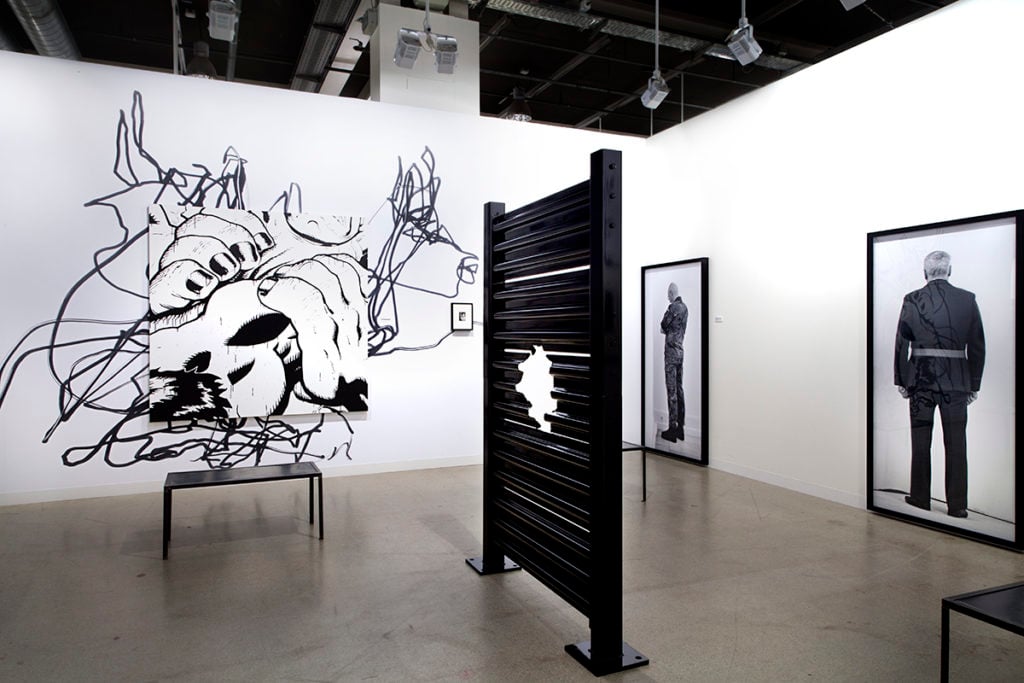
Team Gallery’s booth at Art Basel in 2013, with work by (left to right) Pierre Bismuth, Gardar Eide Einarsson, Banks Violette, and Santiago Sierra. Photo courtesy of Team Gallery
Now, Team Gallery is no longer a young emerging gallery, and hasn’t been one for at least a decade. At the same time, you’re not a blue-chip gallery either. At a time when the mega-galleries are getting bigger and bigger and the emerging galleries are getting smaller and smaller, how would you say Team fits into the market landscape?
You know, every dealer would be very happy and content if they had an emerging artist who connected very well with the world and then woke up the next day a blue-chip artist, because these are the two parts of the market that are still on fire. But that doesn’t happen. You might be able to cite one or two artists who actually have appeared out of nowhere and now have secondary-market sales at $2 million, but it’s a tiny, tiny number. And then you have everyone else.
Would you say you’re a mid-tier gallery? That’s a term that is bruited about.
If that’s the term, I’m very comfortable with it. We still show emerging artists, and we show mid-career artists, and people’s interest in the gallery comes from both of those things. People are able to frame the young artists we present to the world as a part of the gallery’s history. So, it’s very obvious to me that Mark Verabioff, for example, is read against Banks Violette’s exhibitions with the gallery. The work is very related—so you’re launching a new artist, but within a context. The fact is, at present, 80 percent of the gallery’s income comes from the emerging artists, and only 20 percent comes from all of the mid-career artists.
What about someone like Ryan McGinley—wouldn’t you consider him to be mid-career at this point?
He’s 40, and he’s probably the best-known artist in the gallery—but he also makes photography, and only photography. Which means that the prices that circulate around painting have never circulated around his work. If you look for where Ryan sits in the marketplace, compared to where Dan Colen or Dash Snow—who emerged simultaneously—sit, we all know that photography counts for infinitely less revenue.
What percentage of your overall revenue would you say comes from art fairs?
The easiest way to talk about that is to talk about Art Basel Miami Beach. Five years ago, I would come back from Miami with enough profit to run the gallery for three months. At the time, we only had two spaces, so it meant that we could do four shows—two at each—with profits from the art fair. Now, maybe one of those shows might have a dinner, one might have a shipping bill, one might have fabrication costs, and one might have all of those things. And I wouldn’t have to worry about selling any work because of the profits netted at the fair. Then, in 2016, I came back from Miami with $35,000 in sales from a booth that might have cost $200,000 to put together. You’re now coming back with losses.
At that point, I realized that things had changed radically, and I needed to change how I did things as a gallerist vis-à-vis fairs. We had already committed to doing Miami last year, and I didn’t think it was professional to pull out of a fair that I’d already committed to participate in. I thought: I’ll do a one-person show, so at least I will benefit one artist. Because if we do a greatest-hits booth, where we show 11 things that we think are very sellable, chances are we can sell at least half of that work through JPEGs and we don’t need to take it anywhere. Also, at this point, I think if you show a work in your gallery and you don’t sell it, it somehow accrues value, because all of a sudden it has an exhibition history. If you show a work at a fair and it doesn’t sell, the value is gone. It’s burned.
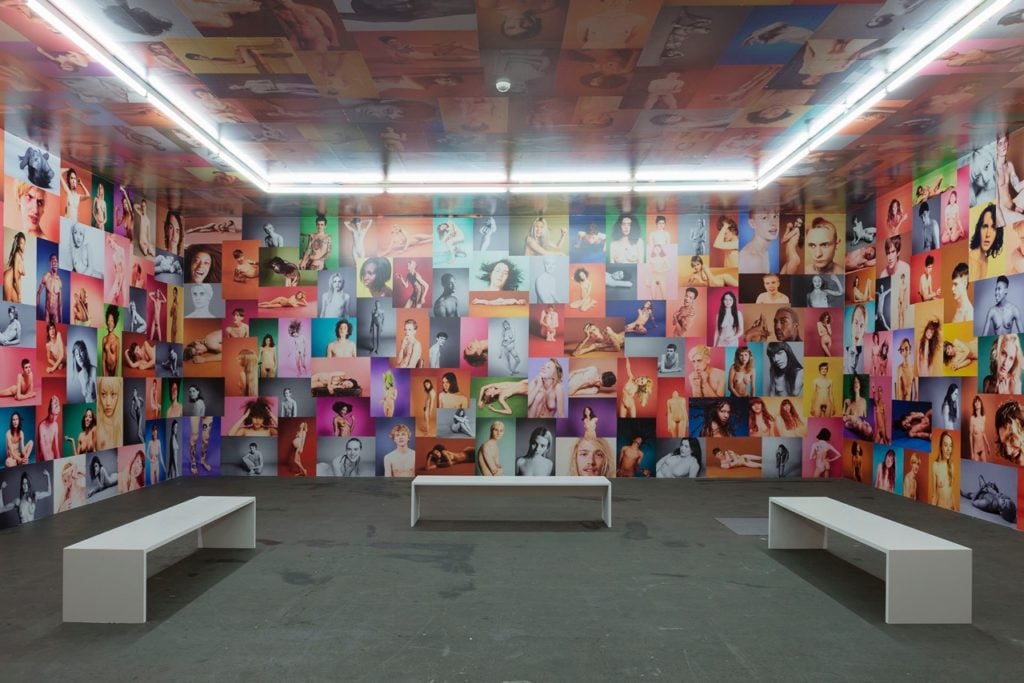
Ryan McGinley’s YEARBOOK at Art Basel’s “Unlimited” section in 2015. Photo courtesy of Team Gallery.
What about if it’s in an impressive section, like Art Basel’s “Unlimited”?
I’ve done 13 projects at “Unlimited,” and some years I’ve done as many as three. Of the 13 projects, I have sold two. This includes at the height of the market and when the market was slowing down, so I want to say, “Well, it’s just me. I’m just not a very good gallerist.” However, I’ve done some of these in partnership with other galleries, where we’ve split the costs, and these galleries include Gladstone, Air de Paris, Sprüth Magers, Lisson, and Gisela Capitain—and those didn’t sell either!
Last December, for our final year in Miami, we showed only Parker Ito. Of nine paintings, we sold six. If he was a brand-new artist, we would’ve sold all nine without a doubt. But he’s not brand new, he has a complicated history, and he’s still a very young artist, so that set the price point. As a result, there was no way for us to recoup the costs in Miami—but there’s goodwill when you show one artist at a fair. I was representing the artist, so I felt like I was doing my job.
Now we only have one more, Art Basel Hong Kong, until all of our art-fair commitments run out. And when that happens, we are going to take the tab on our webpage that says “art fairs,” and we are going to remove it.
Stay tuned for the second installment of this interview, in which Jose Freire describes his plan for life after art fairs.
Follow artnet News on Facebook:
Want to stay ahead of the art world? Subscribe to our newsletter to get the breaking news, eye-opening interviews, and incisive critical takes that drive the conversation forward.
SHARE
Article topics
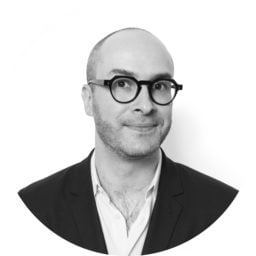
No comments:
Post a Comment